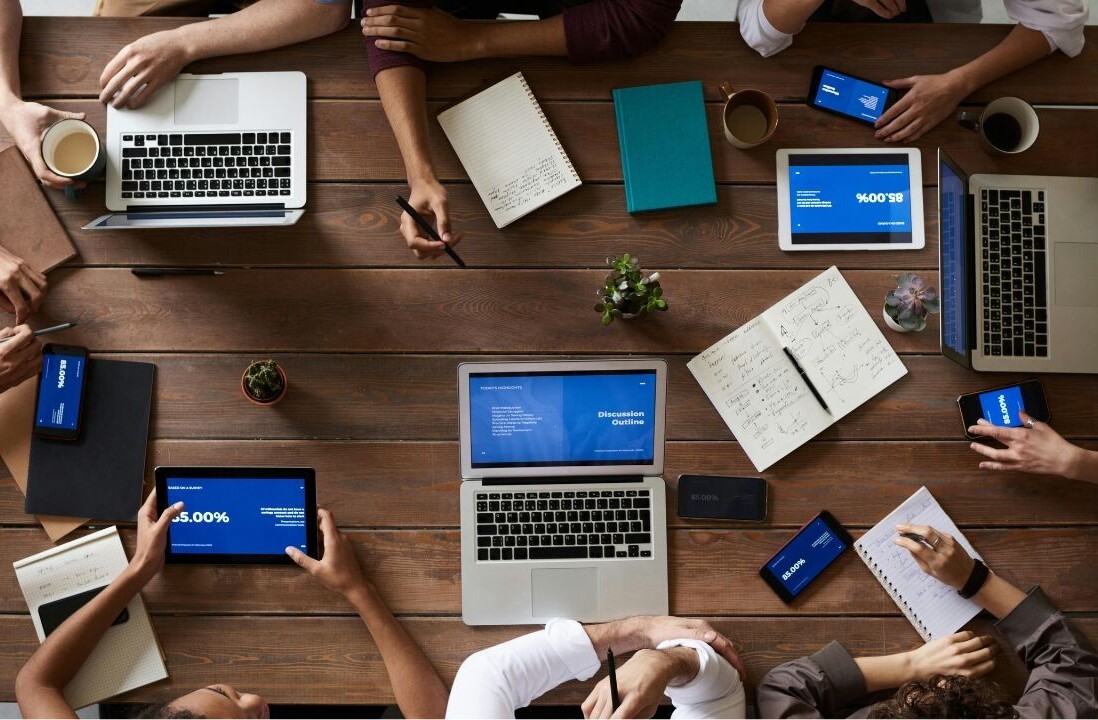
What are the major differences in doing marketing for startups compared to mature companies? Over the past few years, this question has puzzled me… and, it turns out, many of my colleagues.
But now that I’ve been on the two diametrically opposite sides of the marketing universe — conceptualizing omnichannel campaigns in mature companies and analyzing promotional mechanics in early-stage startups — I’ve had the opportunity to compare them and figure out exactly where the difference lies.
So if you’re interested in knowing the answer, check out the quick summary of my findings below where I highlight the most striking differences in addition to sharing the lessons I learned along the way.
1. Embrace uncertainty in the early days
Developing, planning, and executing large-scale marketing projects in established companies usually require setting well-defined goals that the marketing team is expected to achieve.
Participating in such projects, specialists typically have a system in place to acknowledge, plan, and measure the goals and outcomes of their marketing activities.
For a startup, especially one in the early stages, the situation is completely different. At its heart, entrepreneurship is not about sticking to pre-written guidelines but instead about inventing novel solutions.
Uncertainty is a distinguishing trait of early-stage companies in not only marketing endeavors but also everyday operations, so setting such detailed goals for startups is challenging. As we all know, every startup is unique, and the road to good results is paved with unexpected twists and turns.
Nevertheless, a startup founder should outline at least the minimum range of key objectives of a promotional campaign. It’s necessary to picture what the marketer should be working on, after all. Having a direction to move forward gives a chance to speed up the process without busting an advertising budget.
2. Continue experimenting on the fly
As startups operate under a high level of unpredictability, they test various promotional channels, growth hacking mechanics, and advertising initiatives more often and to a greater degree than mature companies.
When I worked for an established business-to-consumer company, I started preparing marketing campaigns weeks and even months before their actual launch. The process involved profound analysis and planning filled with a series of focus group discussions, in-depth interviews, and hours of research by account planners, among other things.
This approach reduced the need for numerous experiments at the start and entire duration of the campaign. Still, it is different from the startup world, where companies might be born and miraculously flame out within the time span that it took to launch one advertising campaign in a large corporation.
Unlike a mature company, a startup has more unknown variables to consider and the higher probability that the final result may not be the one initially expected. Adapting to changing circumstances under intense time pressure, startups need to keep experimenting and stay resilient to complications until they find the best-performing solutions.
I came across an illuminating example of this in one early-stage startup, which struggled to build a strong lead generation process. It tried multiple conversion and distribution tactics until a startup founder heard about a few effective advertising methods and called a performance marketer.
A few hours later, a campaign was up and running on their social media channels. Based on what the startup team learned from gathering and analyzing the campaign results in two days, it identified many ways to gain swift attention from potential customers and put sales on a steady upward trajectory.
3. Acknowledge the proximity to the problem and its solution
For the most part, early-stage startups have small teams, often with one person wearing multiple hats by participating in a number of cross-functional projects outside of their initial job description. This situation represents a blend of advantages and disadvantages.
One advantage is that startup employees can explore different aspects of business by rolling up their sleeves to support project execution. This turns such employees into more well-rounded specialists with hands-on experience.
Of course, large companies provide great opportunities for professional development, creating a learning culture. An example would be rotational management programs in different corporate departments. However, the participants of such programs often have more specialized responsibilities as compared with that in startups.
Another positive aspect of joining a startup is that marketers can better understand the market, consumers, and the core consumers’ problems the company tries to solve with the help of its product.
While conducting market research in-house, for instance, a specialist can uncover earlier insights about consumer needs and tailor the product offering to address these needs straight away.
Enterprise software-as-a-service (SaaS) solutions with their advanced features and customization options are a brilliant illustration of meeting customer demand in a more targeted and agile way.
In the context of disadvantage to this proximity to the problem and its solution, if a startup employee stumbles upon barriers when trying to do a certain task and does not have more knowledgeable colleagues to ask for guidance, this task might remain uncompleted.
4. Get to know the customers well
Generally speaking, a deep understanding of the target audience is important for different types of businesses. While mature companies might have many resources to invest in consumer research, startups can get a head start in some cases.
For instance, there are situations when founders can supercharge their startup growth by listening to and engaging with the representatives of their target audience early on.
I am not stating for one moment that established companies do not interact with consumers when they develop new products. I am merely saying that they usually adopt a more structural and prolonged approach.
Working on a project as part of the marketing team of a large company, I participated in focus groups to get a glimpse into the target audience’s preferences and needs. While the process from organizing the consumer research activities to getting the final results and recommendations from our market research agency was masterfully orchestrated, it took a couple of weeks.
Early-stage startup founders can obtain helpful information in a matter of hours by calling their first customers personally and asking their opinions.
In a direct-to-consumer startup, for example, marketers and founders might have the customer insights at their fingertips. They can immediately identify the best-selling products by looking at arrays of readily available data instead of collecting sales reports from business partners and retailers prior to the analysis.
Even though a startup might have limited resources, due to its proximity to customers and ability to get an answer fast, it is not necessarily in a worse position than industry heavyweights with substantial budgets for consumer research.
Entering the playing field, startups can get far ahead in the game by following a test-and-learn approach, constantly looking for growth opportunities, and listening to the customers’ voices.
Get the TNW newsletter
Get the most important tech news in your inbox each week.




